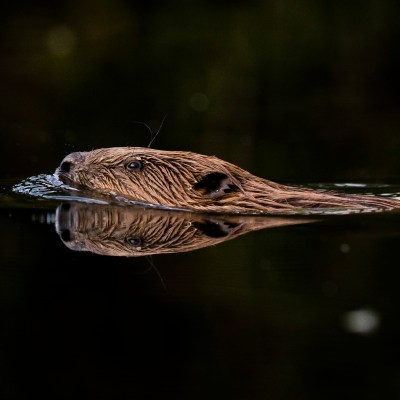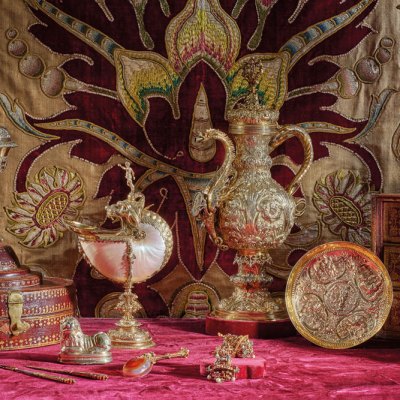From the October 2023 issue of Apollo. Preview and subscribe here.
Frans Hals (1582–1666) was famously a late starter. There’s no evidence of works painted by him until he was about 26, which is too late for any artist. We don’t know how he earned a living before that. He was probably a pupil of Karel van Mander, who died in 1606, but the first painting that we can attribute to Hals – or at least that we know with certainty was by him – dates from around 1610. Surprisingly, there is no trace of the master in the work of the pupil; Van Mander painted history paintings and the odd genre picture. It is possible that Hals earned his living as a restorer, which was something artists did when they had the skill; he might have worked in another studio, we just don’t know. He only enrolled in the Guild of Saint Luke in 1610 – late in life, for a man of his era.
Hals’s portrait of Catharina Hooft shows a small girl – or more accurately a baby – who was clearly no street urchin. Her social position was confirmed at the age of 16 when she married Cornelis de Graeff – a prominent citizen who became mayor of the city of Amsterdam.
But although the subject is very clearly part of the patrician class of 17th-century Amsterdam, at its heart, this is a portrait of a toddler. It is what we call early period Hals, even though he was probably around 36 when he painted it – and this is not the work of a budding artist.
Portrait of Catharina Hooft with her Nurse (1619–20), Frans Hals. Staatliche Museen zu Berlin, Gemäldegalerie. Photo: Jörg P. Anders; © Photo Scala, Florence/bpk, Bildagentur für Kunst, Kultur und Geschichte, Berlin

The child is held by a woman who, for a long time, was thought to be her mother, as is conventional. But we now know it to be her nurse, whose name we do not know. Catharina Hooft’s mother was, by then, 44 years old, which is considerably older than the woman that you see; her dress also resembles a nurse’s. But it is not only by a process of elimination that we know her identity. The painting remained in the possession of the De Graeff family until 1870 and is mentioned in two family inventories. One of these, from the 18th century, very specifically describes this painting as being by Frans Hals of a member of the family as a child, with her nurse.
Quite why the person who commissioned the painting chose to have Catharina portrayed with her nurse rather than her mother is the million-dollar question. One explanation might be the mother’s age; at 44, she would have been seen as quite a mature mother. On the other hand, it may just be that the family were quite fond of their nurse – or that the nurse was very fond of the child, or vice versa. Perhaps they simply wanted to record that. At the centre of the painting, the nurse is holding an apple for the child. It creates a focal point for the interaction between nurse and child – as a sign of affection between the two of them.
The painting is one of Frans Hals’s absolute masterpieces. You have to imagine the response of a viewer in 1619, seeing such a small toddler portrayed – and not with her mother, but with her nurse, who is shown so sympathetically. Nothing quite like this had previously existed. It might look a little bit sentimental or a little bit too easy on the eye to an audience now, but it’s actually very unusual. Portraiture can often be such a functional thing. In most cases it is about commemorating – it is about dynasty. But in this portrait, Hals elevates these requirements to a new level. It is a work that forces the question: when does portraiture become art? The smile of the nurse – the way Hals has captured her manner of looking at you, just so – and the mischievous smile of this little child turn the picture into a visceral experience, far more than just a record of someone’s likeness.
As shown by the exhibition ‘Pride and Joy’ – presented at the Frans Hals Museum in Haarlem and the KMSKA in Antwerp, in 2000–01 – there are a fair number of portraits of children that were created during this period. Normally, however, the children are a little older than Catharina, who must be only one or two here. The difficulty of painting children, of course, is that they do not sit still. This points to one of the great skills of Hals, whether he is painting children or adults. I’m not sure he was interested in people sitting still; he wanted to capture what they were like when they were talking, drinking or smiling. Somehow, he managed to capture those things very quickly.
It’s a bit of a mystery how he did that; as far as we know, Hals never made any drawings. He had, I would think, an immense visual memory and could paint his portraits from recall. It makes a work such as this portrait typical of Hals; perhaps it wouldn’t have made the first difference to him whether his sitters were children or adults. But it also seems likely he worked quickly. I refer to his technique as ‘drawing with the brush’. He would have roughly laid out a person’s contours in brown paint, before essentially working alla prima with quick strokes straight on to the canvas. You could wonder why he didn’t ever make any drawings but I would say that it actually made sense because he was, in a way, drawing in paint. As you would expect for works from this period, many passages within it exhibit great control: the dress of the little child, like the embroidered elbow of The Laughing Cavalier (1624), is very precise. But other details show flickering brushstrokes.
The brushwork used to depict the gold brocade of the dress is Frans Hals at his most meticulous

Start with the blacks. Of course, they’re not all blacks – there are variations of black with a little bit of white mixed in, that then become greys. Van Gogh, who was a great admirer of Frans Hals, famously claimed that Hals knew no fewer than 27 blacks. This is an exaggeration but it’s true that he does use an enormous variety of blacks and greys to model his pictures. This is in stark contrast to passages such as the brocade on the child’s dress where he’s actually fairly precise in what he conveys – this is Hals at his most meticulous. Both in the detailed passages and the broader, visible brushstrokes, Hals can be immensely controlled in the work of his earlier period. It is a million miles away from late Frans Hals when all becomes Abstract Expressionist, as it were.
Hals really is a painter’s painter – the result of the degree to which he values brushwork and the direct placement of colours, sometimes in quite stark juxtaposition. He doesn’t like gradations very much. He doesn’t do layers of glazing to obtain very smooth surfaces – that’s not what he’s interested in. He works, instead, with brushstrokes – and I think this freedom of technique is bound up with the way he observes faces and the way he observes character. In terms of purely painterliness, it is almost as though he is painting en plein air. The term wouldn’t have meant anything to Hals, but there is something useful in how it encapsulates the way he observes colour values. His use of colour seems similar to, say, a landscape sketch of the 19th century; each colour is very quickly noted so that the canvas provides a record of all the various values that he sees.
This might, in part, explain what the Impressionists saw in him. They thought of him as a sort of great precursor of what they wanted to do themselves. He was rediscovered by Théophile Thoré (1807–69); one of the wondrous figures in the history of art who not only managed to rediscover Hals, but also Vermeer. Thoré was attracted to the tradition of painting roughly. This style is perhaps the hardest thing for an artist to master – Hals’s teacher, Karel van Mander, advised that it is best to keep away from it since it is far too difficult. Artists who preceded Hals in the rough style include Titian; Rembrandt (1606–69), who was quite a bit younger than Hals, started doing it a little later. It is only achievable if you are an artist entirely on top of your game; those who try to imitate it often produce something that looks rather still. Being able to paint quickly – or at least give the work the appearance of having been painted quickly – is reserved for virtuosos. It’s what the Italians would have called sprezzatura: how can you make something look as if it’s done without any effort? And yet it looks completely right – which is far more difficult than being phenomenally precise. In Hals’s later work, this technique becomes so abstract, it is almost giving the appearance of carelessness as well. In a work that hangs in the Fitzwilliam Museum in Cambridge you can see the paint is literally dripping down the canvas; he hasn’t even bothered to correct it. It’s the gesture that becomes all important.
As told to Edward Behrens.
Bart Cornelis is curator of Dutch and Flemish Paintings 1600–1800 at the National Gallery in London.
‘Frans Hals’ is at the National Gallery, London, from 30 September–21 January 2024.
From the October 2023 issue of Apollo. Preview and subscribe here.


